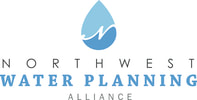|
The summer season is a good time to reflect on the importance of and need for outdoor water conservation in the NWPA region. Outdoor water use, particularly in the summer months, can account for up to 30 percent of your household’s total water use. This presents a significant opportunity to reduce outdoor water use and protect the region’s water supplies. Outdoor watering can lead to higher water and energy costs, deplete vital water sources, and contribute to pollution by carrying lawn and landscape chemicals into nearby water bodies. Additionally, excessive outdoor water use can stress water utilities, especially during the summer when demand peaks. To meet increased demand, utilities often expand their infrastructure capacity, which can be costly. The NWPA, in collaboration with various partners, has developed several resources to help residents reduce outdoor water use. These include a regional lawn watering ordinance, an outdoor water conservation manual, and educational brochures on water-efficient landscape practices like establishing a new lawn from seed or sod. These materials provide practical tips and tools to reduce water use while maintaining attractive landscapes. Reducing the amount of water used for outdoor watering can also lower peak demand, potentially delaying or eliminating the need for costly expansions. This, in turn, helps avoid passing these costs on to ratepayers. One of the NWPA resources worth highlighting is the regional lawn watering ordinance, which can help communities take a comprehensive approach to outdoor water conservation. The model ordinance limits outdoor watering to certain days and hours, prohibits establishing new seed and sod during summer months, prohibits the watering of sidewalks to reduce water waste, offers watering exemptions when water-efficient practices or technologies like drip irrigation or WaterSense devices are used, and empowers mayors or managers to issue an emergency proclamation and further regulate or prohibit water use in the event of diminished water supply caused by a prolonged dry period or drought, increased water demand, equipment failure, or water quality concerns. The ordinance also applies these regulations year-round to maximize conservation benefits. Although many NWPA communities have adopted parts of the ordinance in some capacity, such as setting hours and day limitations for outdoor watering, there is a need for more communities to fully adopt the model ordinance. NWPA members are encouraged to revisit the model ordinance this summer and consider its full adoption. Embracing outdoor water conservation practices like those outlined in the ordinance will help NWPA communities collectively ensure the long-term sustainability of the region’s shared water supplies. The Illinois Water Inventory Program (IWIP) develops and maintains a database of high-capacity water wells and intakes from public water supplies, self-supplied industries, irrigation, fish and wildlife, and conservation sectors. But they do much more than collect data. Participation and involvement with IWIP pays dividends for operators, stakeholders, and users alike.
IWIP coordinates reporting and data collection on high-capacity water wells and intakes statewide, which are defined as any well or intake that is rated to pump 70 gallons per minute (gpm) or greater, both individually and as a combined measure when multiple wells/intakes are present at one facility. This collection is done primarily through IWIP’s Online Reporting Tool and covers groundwater and surface water uses. How can the price of water in your community be changed to promote water conservation? How can municipalities price water to keep basic needs and services affordable for all residents while promoting reduced use? And what are the long-term benefits for the municipality?
What is conservation pricing? Conservation pricing is water rate structures that motivate consumers to use water efficiently. These structures come in many forms, such as uniform rates, tiered rates, seasonal rates, and water budget-based rates. For all of these rate structures, wasteful or inefficient water use is more costly for customers than using only what they really need for drinking, cooking, sanitation, and cleaning. Significant portions of the Chicago region – especially those dependent upon groundwater sources -- are encountering water supply and quality issues. The region’s comprehensive plan, ON TO 2050, anticipates these issues will grow unless additional steps are taken to coordinate and conserve the region’s shared water supply resources. The recently updated regional water demand forecast revealed that while overall water use is stable, projected demand will exceed available groundwater supplies in some areas. Yet with additional conservation and efficiency measures, the region can maintain its long-term drinking water supplies.
Protecting and conserving our water supply is a priority of all water resource managers, public works directors, and municipal leaders in the Chicago area. What is one of the most efficient ways to address water conservation? Look at the lawns.
Landscape and lawn watering is the leading discretionary use of water in the Chicago region, accounting for more than thirty percent of all residential water use. Additionally, as much as fifty percent of all water used outdoors is wasted due to inefficient watering methods and systems. This use puts a strain on existing water resources, particularly in Northwest Water Planning Alliance communities. It also impacts existing water infrastructure, causing peak usage to rise and increasing the need for additional capacity-building infrastructure, which can be of huge cost to communities. |
ABOUTThe latest updates page features posts about issues affecting NWPA member communities and best practices, drawing on interviews and conversations with experts. Archives
July 2024
Categories
All
|

